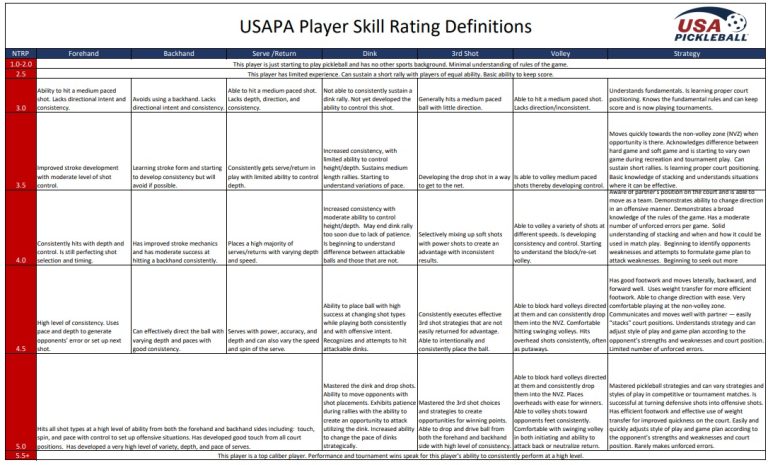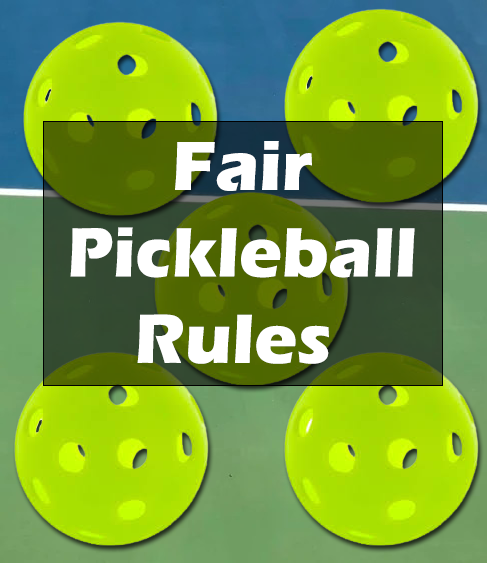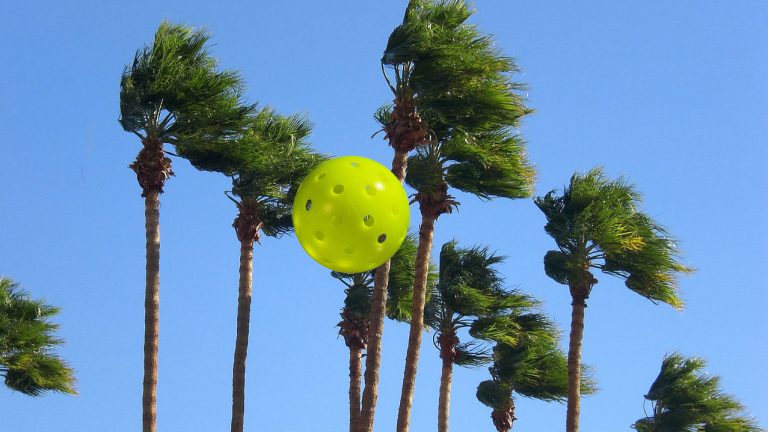Pickleball Rules 101: Serving, Scoring, and More

Mastering Pickleball Rules: The Ultimate Guide
Pickleball’s Unique Kitchen Rule Explained
Pickleball is an increasingly popular racket sport that skillfully blends elements from tennis, badminton, and table tennis. Played on a smaller court than tennis, the game utilizes lightweight paddles and a perforated plastic ball, making it accessible and enjoyable for a wide range of players. To make the most of your pickleball experience, it’s essential to understand the rules.
In this comprehensive guide, we’ll delve into pickleball rules, including serving, scoring, the two-bounce rule, and the unique kitchen rule, as well as answer some frequently asked questions about the game.
Pickleball Serving Rules and Techniques
Serving is a critical aspect of pickleball, and executing it correctly is crucial to avoiding faults. When serving, ensure your arm moves in an upward arc as you strike the ball, and make contact with the ball below waist level. The paddle’s head must not be above the highest part of the wrist at contact. Players must serve diagonally crosscourt and ensure that the ball lands within the opposite diagonal court. While serving, the server must remain behind the baseline, and their feet cannot touch the court or outside the imaginary extension of the sideline or centerline. Each server gets one serve attempt.
Serving Sequence in Pickleball
In doubles, both players on the serving team have the opportunity to serve and score points until they commit a fault, except for the first service sequence of each new game. The first serve of each side-out starts from the right/even court. If a point is scored, the server switches sides and initiates the next serve from the left/odd court. The server continues alternating sides until a fault is committed, and the first server loses the serve. When the first server loses the serve, the partner then serves from their correct side of the court. In singles, the server serves from the right/even court when their score is even and from the left/odd court when their score is odd.
Pickleball Scoring Rules and Guidelines
In pickleball, only the serving team can score points. Games are typically played to 11 points, with the winning team needing a two-point advantage to secure victory. In tournament games, matches may be played to 15 or 21 points, and the winning team must still win by two points. When the serving team’s score is even, the player who served first will be in the right/even court when serving or receiving. Conversely, when the serving team’s score is odd, that player will be in the left/odd court when serving or receiving.
The Two-Bounce Rule Explained
Players must follow the two-bounce rule, which is a fundamental aspect of pickleball gameplay. Upon serving, the receiving team must let the ball bounce before returning it, followed by the serving team allowing it to bounce before returning as well. After each team has allowed the ball to bounce once in their court, players can choose to volley the ball (hit it before it bounces) or play it off a bounce (ground stroke). The two-bounce rule prevents serve and volley advantages and promotes longer rallies.
Understanding the Non-Volley Zone (Kitchen Rule)
The non-volley zone, also known as the kitchen, is the 7-foot area on both sides of the net. Players cannot volley within the non-volley zone, preventing powerful smashes from a close position. A player commits a fault if they step on the non-volley zone or its lines while volleying, or if their momentum causes them or anything they are wearing or carrying to touch the non-volley zone or its lines.
Line Calls and Faults in Pickleball
Players may find line calls in pickleball challenging, but the general rule is that any ball contacting any part of any line, except the non-volley zone line on a serve, is “in.” A serve that contacts the non-volley zone line is deemed short and results in a fault.
In pickleball, Any action that violates a rule results in a fault, causing play to stop. If the receiving team commits a fault, the serving team scores a point. However, if the serving team commits a fault, the server loses their serve or causes a side out.
Frequently Asked Questions About Pickleball Rules
Q: What is the non-volley zone in pickleball?
A: The non-volley zone, also called the kitchen, is the 7-foot area on both sides of the net. Players cannot volley within this area.
Q: Can you step into the kitchen in pickleball?
A: Yes, you can step into the kitchen in pickleball, as long as the ball has bounced first. Entering the kitchen before the ball bounces is considered a fault.
Q: What is a fault in pickleball?
A: A fault in pickleball refers to any action that stops play due to a rule violation. A fault by the receiving team results in a point for the serving team, while a fault by the serving team leads to the server’s loss of serve or side out.
Q: Can you hit a ball before it bounces in pickleball?
A: Yes, you can hit a ball before it bounces in pickleball, but only if you are not in the non-volley zone. Volleying is prohibited within the non-volley zone.
Pickleball is an entertaining and engaging sport that players of all ages and skill levels can enjoy. Understanding the rules of pickleball is vital for a fair and enjoyable experience. By following these rules and guidelines, players can avoid penalties and have a fantastic time playing this fast-paced, dynamic game.








A ball that is returned to the opposite side, but it bounced back to the original side, without being hit by the opposite player. Who gets the point here?
That would be the Wind Rule in Pickleball